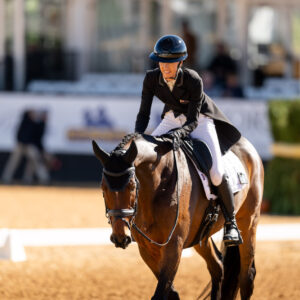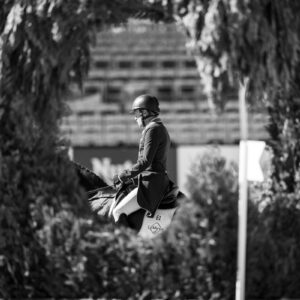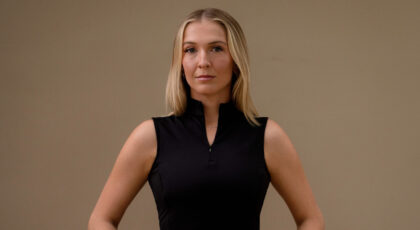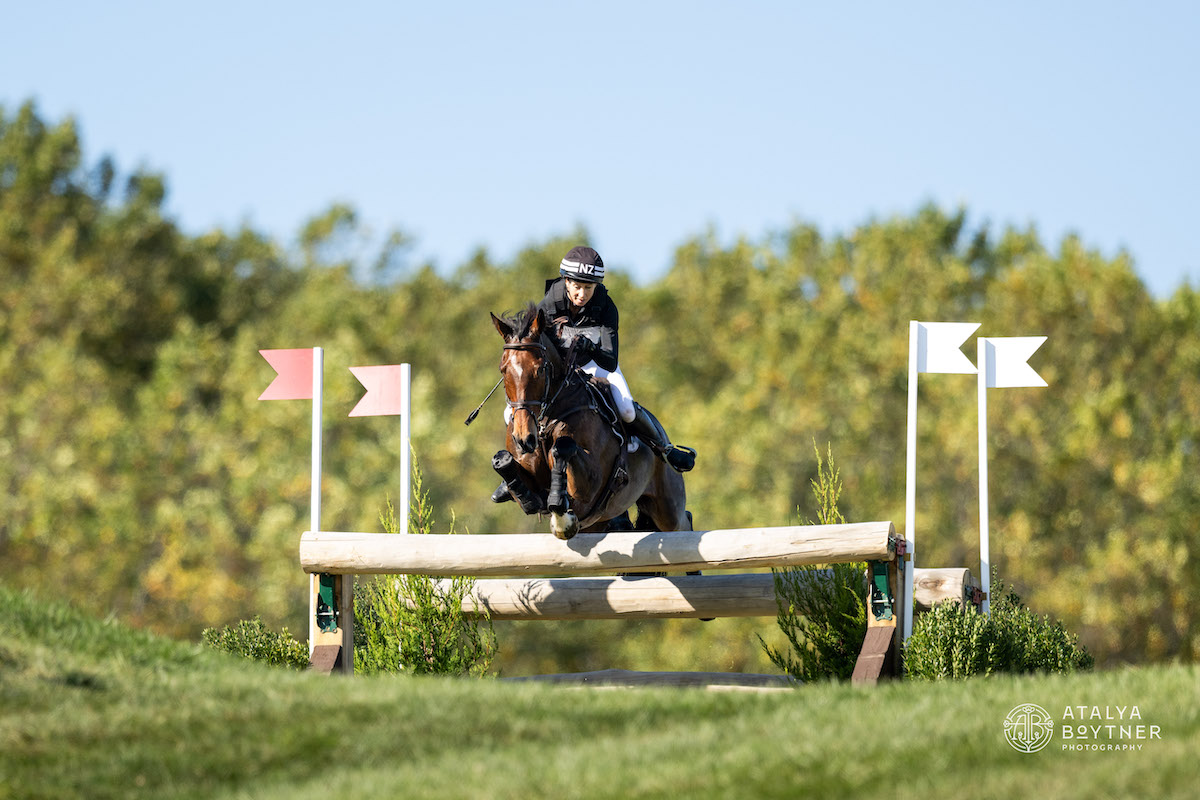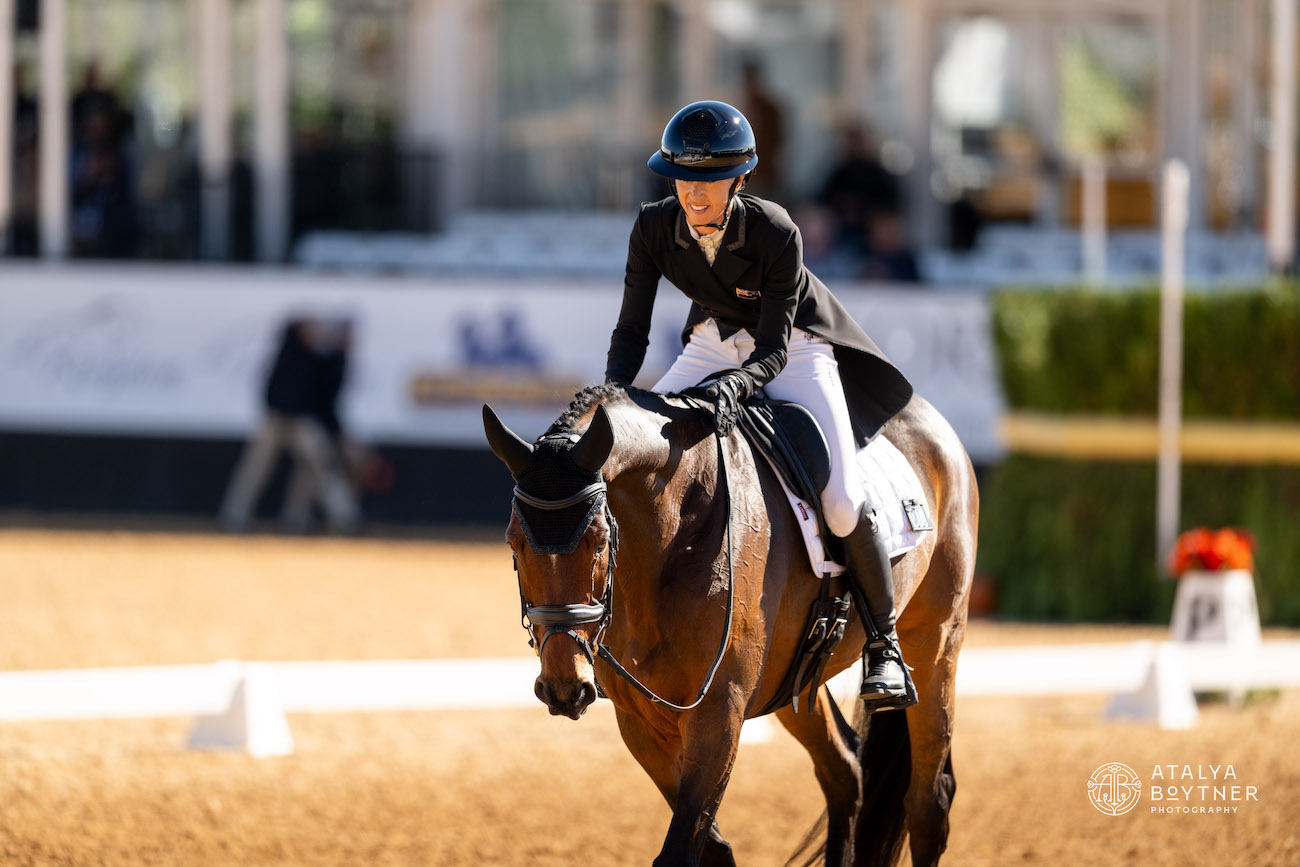According to a recent economic study, female jockeys who race modern Thoroughbreds could fare just as well on the racetrack if given the identical chance.
The study appearing in the Journal of Sports Economics is entitled “In the Money: Gender and Jockey Success on the Thoroughbred Racetrack” by Alexander D. Binder, PhD; Paul W. Grimes, PhD and Russell G. Winterbotham.
Binder is Assistant Professor of Economics at Pittsburg State University’s (KS) Kelce College of Business, where Grimes is Dean and Professor of Economics. Winterbotham is a professional racing handicapper.
No similar study had been done since 1995, that by the aforementioned Grimes with M.A. Ray, in the Sociology of Sport Journal, so it was time for further study and a different perspective.
Let’s begin with an important distinction. This new study and its results focus on labor economics, not sociology, so lead author Binder and his associates are not arguing there is discrimination against choosing female over male jockeys.
Rather, they argue based on their data that,the probability of female jockeys finishing a race “in the money” based on their data was not significantly different statistically than that of male jockeys all other things being equal—certeris paribus in academic language. The phrase “In the money” denotes a 1-2 or 3 finish in a race for their purpose.
Let’s unpack the academic in practical terms. To do that let’s go to the horse’s mouth so to speak, Professor Binder.
“The main result here is that the trainer should not select a jockey on the basis of gender, ‘all else being equal,’” says Binder, “and a lot is caught up in that last phrase, ‘all else being equal.’”
Without getting caught too deeply in the weeds, there are basically two kinds of academic studies: quantitative or qualitative, statistics or characteristics. This study is about the statistics. More on the latter later.
Let’s begin with how the authors arrived at their conclusion.
They obtained a data set from Handicapper’s Data Warehouse (HDW) containing the records of 121,548 Thoroughbred horse races during 2016–18. The HDW gathers its data from Equibase, Thoroughbred racing’s most comprehensive and recognizably reliable source of data.
The sample identified 935,350 rides involving 2,147 jockeys riding for 6,962 trainers guiding 85,684 unique horses over 105 racetracks.
In that sample data, there was no information about the gender of the jockey, so this was identified using other sources including Equibase: the FemaleJockeys.com, Horseranker.com and personal websites; news reports and personal correspondence.
This process left a total of 2,036 jockeys with complete records, but only 250 or 12.28 percent were female while 1,786, 87.72 percent were male. The immediate question for the skeptic: Does that smaller sample size of women jockeys render the finding illegitimate?
“The number of jockeys doesn’t make it illegitimate,” claims Binder. “Yes, we might run into small sample sizes but, with a three-year sample, we had over 250 female jockeys.”
In other words, the study’s finding are statistically significant.
Despite their lower win and in the money rates, female jockeys in the study rode under some—pardon the pun—handicaps. They received fewer mounts and rode lower-rated horses. That said, they had lower average jockey ratings and shorter careers than their male counterparts. Again, this points to some qualitative issues we’ll get to in a bit.
“What are all the things that affect the outcome of a race?” pondered Binder. “We included characteristics about the field, about the track, about the horse of course, about the jockey, the trainer, the weight allowances, all those things. So, is the jockey’s gender one of the significant variables or is it insignificant; does it have no effect?
The authors broke down the available data into three models using a method called probit analysis. Think black-white, good-bad, in this case male-female outcomes in different-rated types of races on different kinds of surfaces with different kinds of horses and other variables. They considered stakes, allowance, and claims or maiden races.
“You need to know what are all the things that affect the outcome of a race? So we used the success variable ‘Finishing in the money’ and then we included in our data set all the factors we thought affected the outcome of the race. That’s something handicappers do all the time.”
The salient question: Do male jockeys outperform female jockeys?
“When it comes to finishing in the money, we found that it had no effect on the outcome of the race…once you control for all the other things, including the jockey’s success.”
The study identified male jockeys finished in the money 39.24 percent of their races, female jockeys 34.71 percent. Males won 13.14 percent of their races, females 10.66 percent.
Too, the results indicate while female jockeys have a statistically significant chance of finishing “in the money” all other things being equal, it does influence the likelihood of a horse winning a stakes race, male jockeys having the edge. Stakes races are the highest level of Thoroughbred racing.
But now, let’s dive a bit into the weeds. Recall this is a quantitative study, about the numbers and their statistical significance.
The next logical question is: How do you explain the result?
“Perhaps unsurprisingly—it wasn’t surprising to us—our model doesn’t explain that much of the variation,” says Binder. “Because if it did, we could all gamble and make tons of money,” he notes with a laugh.
So, let’s look at some of the factors that can explain the results. Let’s get qualitative.
Like workers in many fields, jockeys work in what labor economists call a “monopsonistic” market. In other words they are chosen by someone for a task based on that person’s criteria. In the case of jockeys, it’s usually trainers who get to make the choice.
Let’s look at it from the trainer’s point of view. But there is this caveat: the authors did not speak with trainers. This, remember, is a quantitative study—think “analytics” you fans of baseball bean counter Billy Beane of the Oakland A’s and other professional team sports number crunchers.
“I think some people misunderstand what we are saying,” explains Binder. “if a trainer is presented with a male jockey and a female jockey and has no knowledge about them whatsoever other than the fact that they’re male and female, they DO have a basis to select male jockeys because male jockeys tend to have on average more success than female jockeys.”
However, “Provided the trainer has a lot of information about the jockeys, they really shouldn’t be considering gender; they should be considering all that other relevant information. Of course, this is a sociologic issue, but it’s also an economic issue if there is discrimination or limited access to a mount for someone on the basis of gender or religion or whatever.”
Binder explained one of the study’s authors, himself a handicapper, “did not think that trainers discriminate against female jockeys. He thought that trainers very strongly considered the success of the jockey and not the gender.”
But, and here’s the qualitative part, “He also made it sound like trainers in general think male jockeys are better than female jockeys because of the observable but not available statistics like strength or instincts or aggressiveness.”
The authors are pursuing other work that may include interviews with trainers that could address this question.
Now, what about it from the jockey’s point of view? Let’s consider how a jockey becomes a jockey.
The path to becoming a licensed jockey once began with an interest in horses and work on a farm. One would do the “dirty work,” mucking stalls, feeding, grooming and the like while learning about horses and Thoroughbred racing. They would become hot walkers, exercise riders, eventually apprentice jockeys and, hopefully, earn their license. Newly licensed jockeys then would race at smaller tracks on lower rated horses. Success would catch a trainer’s eye and their career would blossom.
Clearly, that took a long-term commitment.
Many states and jockey union contracts prohibited women from riding, the authors note, until 1968 when former Olympic show jumper Kathy Kusner fought for her racing license in Maryland with the aid of a court ruling. A broken leg ended her racing career before it began.
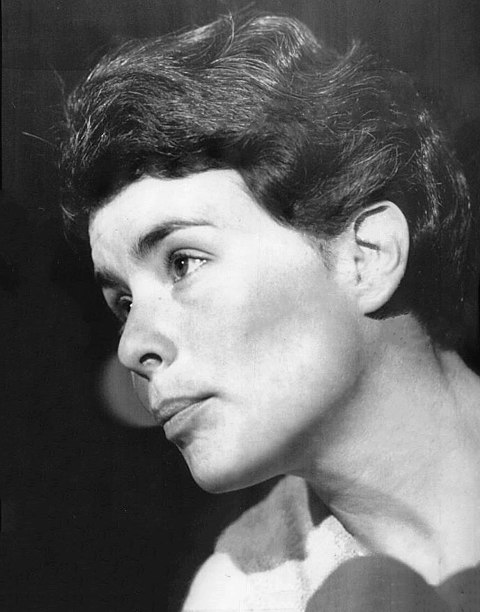
Diane Crump would break that gender barrier the following year riding at Florida’s Hialeah Park.
While the industry now allows female jockeys, and their numbers are increasing at the lower levels of the sport, their entry into the profession has been slow, particularly in higher-tier stakes races. Consistent with the study sample from 2016–2019, females comprise only about 12 percent of Thoroughbred jockeys in the U.S.
Binder pointed out this is not the case worldwide. One study mentioned in their literature review noted that the numbers are somewhat more equal in, for example, New Zealand. One possible explanation is successful male jockeys there move to Australia where the races are more prominent and the purses richer. This would leave “job vacancies” in New Zealand.
In the U.S., career choice is another possible explanation for the gender disparity. Consider what happened to highly successful jockey Julie Krone while riding Seattle Way in August 1993:
“There’s some evidence in labor economics outside of jockeys that one explanation of why men are paid more than women is because men are more likely to take risks or do that sort of job switching that lead to bigger promotions and bigger payouts than women for whatever reason,” explains Binder. “Women may prefer more stability, more temporal flexibility [time control]. That is a pretty common finding in the labor economics field, which would then be relevant to our question in the jockey industry in particular.”
With university and professional school admissions for females exceeding 50 percent in the U.S. and the path to other lucrative careers more open, the lengthy “internship” and dangerous work—virtually all jockeys suffer serious injury at some point in their career—of a career as a Thoroughbred jockey might seem unappealing, notwithstanding the potential money and glamour.
Still, speaking of glamour, some females persist, with sterling results. There is Canadian Chantal Sutherland, who pursued dual careers as a successful model and jockey.

There can be personal considerations. At the height of her fame, after riding Untapable to the 2014 Breeders’ Cup Distaff win at Santa Anita, Rosie Napravnik announced on the winner’s podium she had ridden while pregnant that day and would retire from racing to start her family.

No longer a jockey, Napravnik has since launched the successful enterprise, Rosie Napravnik’s Off-Track Sporting Horses.
The path to becoming a jockey has also changed. Like modern soccer stars, young—almost always men—saw racing as a way out of poverty. This was especially true in poor areas of the U.S. South and in Central America and Mexico.
That is no longer the sole path. Jockey schools have sprung up worldwide, particularly in the U.K., parts of Europe, Latin America, even in the U.S. They are a faster, albeit more expensive, route to jockey apprenticeships and eventual licensing.
Binder hastens to add he and his associates had no intention of citing “discrimination” as the reason for the disparity in the number of female jockeys relative to males in U.S. Thoroughbred racing.
“It may be they just disproportionately aren’t interested as much as are male jockeys. The field of economics is very dominated by men. Is it because women don’t feel welcome or because they just aren’t interested?
“It was my fear in finishing the writing of the article that readers would come away saying there is discrimination. I think that would be a misreading of what we wrote, of what we found. We found nothing that is consistent with discrimination. There could be other explanations for the results that we found.”
Perhaps the answers lie in these qualitative issues: trainers’ perception of physical differences among males and females, the dangerous nature of the work, better educational opportunities and more attractive careers now more available to females, personal considerations and the pathway to becoming a jockey.
These and others all are issues Binder and his associates hope to explore in future studies, questions that can’t be answered by numbers alone. One follow-up study by the researchers is now under review and may soon be published.
We’ll be watching…and reading.


 June 16, 2021
June 16, 2021 












